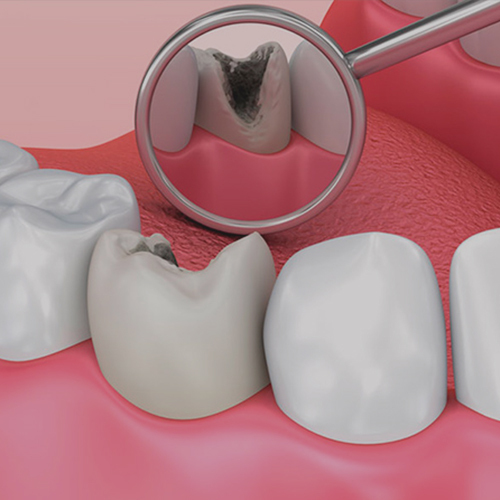Table of contents

A cavity is a hole in a tooth. It may be a tiny hole in a tooth at the very beginning of tooth decay or a larger hole caused by a lost filling. You may develop holes in your teeth from eating disorders or even from heartburn — any condition that increases the acid in your mouth. The byproduct of the bacteria found in plaque is acidic, which eats away at the enamel on your teeth, leading to holes. The more acid, the quicker cavities form.
Holes in your teeth typically form in the crevices and pits on top of teeth, around the gum line and in the areas between your teeth that are especially hard to reach with a toothbrush. Whether you have a tiny hole in a tooth or a gaping space, seek treatment from your best family dentist in Brooklyn to stop the pain and prevent further complications. Once a cavity forms, your tooth is much more susceptible to infection, which can lead to:
Bacteria in your mouth are constant companions; they break down food and drink that you consume. When that food is left in your mouth, especially when it’s leftover residue from sugar, the bacteria feed on it and create acid that then attacks your tooth enamel. A domino effect then occurs:
As the enamel on your teeth continues to break down and weaken with the barrage of acid, the cavities enlarge and the acid begins to attack the next layer in your tooth, called the dentin. Dentin is softer than enamel and easily breaks down until the hole eventually reaches the pulp, the most sensitive part of your tooth. You’ll know that you have a cavity at this point as the nerve pain turns into throbbing tooth pain.
Your Brooklyn family dentist encourages you and your family to brush twice a day and floss at least once a day to prevent even a tiny hole in a tooth. You should also guard against tooth infections, as they’re more difficult to treat. Maintain a healthy diet, seek treatment if you have an eating disorder, and follow your Brooklyn dentist’s advice to:
Your Brooklyn family dentist relies on x-rays and gentle probing to unearth soft spots in your teeth that could indicate a tiny hole in your tooth before you even experience any painful symptoms. When he uncovers a cavity, you need to get it filled as soon as possible to prevent further damage. Your Brooklyn dentist:
Since your family dentist also is a cosmetic dentist in Brooklyn, you have the advantage of his recommendations for filling material. Most often, he’ll use tooth-colored material when the tooth is visible and stronger metals for your back teeth. When a cavity is larger or infected, it’s possible you may need to undergo a root canal, which creates an even larger opening that needs to be covered by a crown.
Do you have any questions about the Hole in a Tooth treatment options in Brooklyn? For more information or to schedule an appointment with the best family dentist Khabensky DDS of Family Cosmetic & Implants Dentistry of Brooklyn please contact our dental facility for consultation with the dentists Alex and Igor Khabensky DDS.